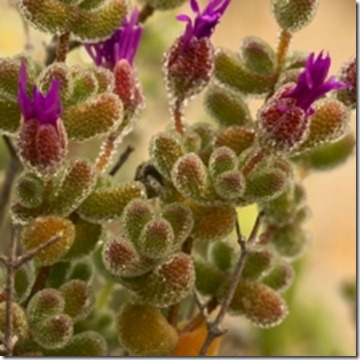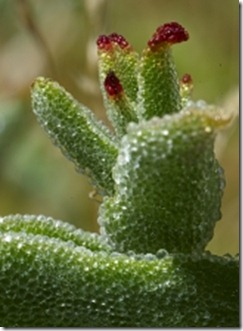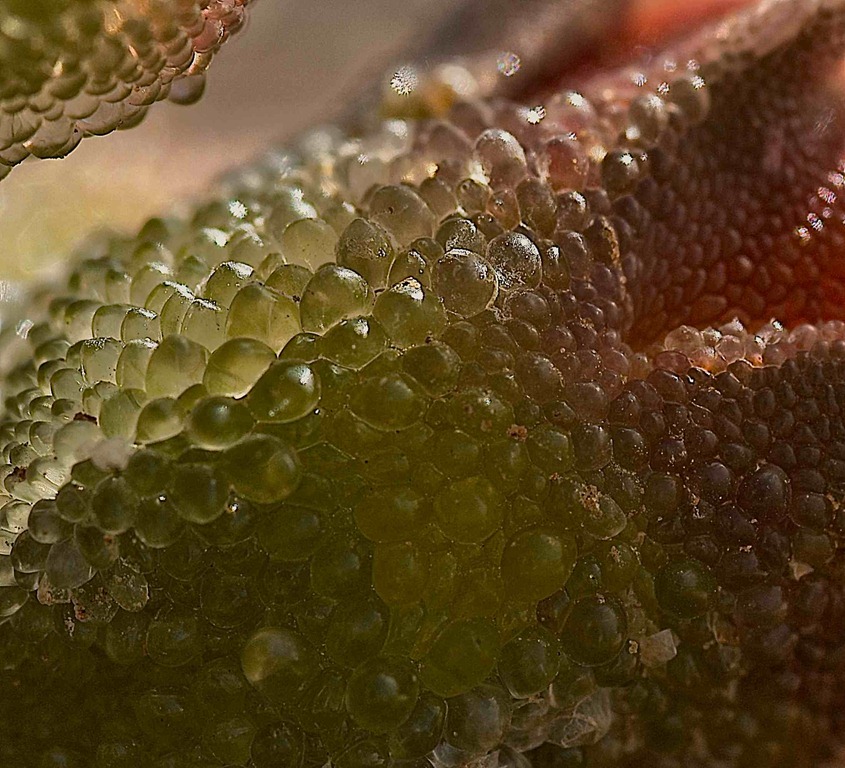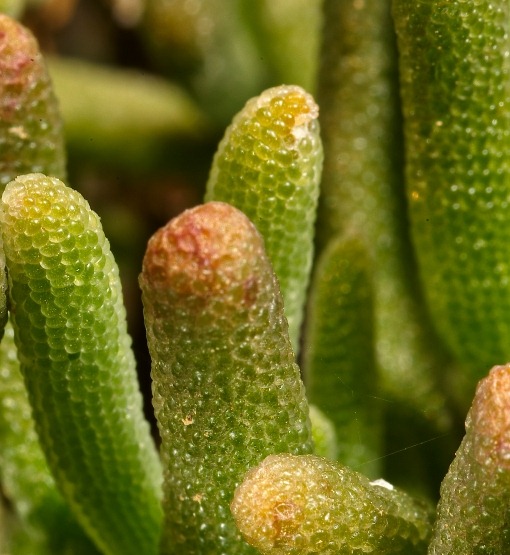The great majority of succulents stores water in stems, leaves and/or roots. Some of them however, mainly members of the vygie family (Aizoaceae) also make use of external storage. They have an epidermis covered with extremely enlarged and swollen cells (so called bladder cells) that are able to store water. Amazingly up to over 50 % of the total amount of water stored by the leaves can be located in these cells.
The cells have another advantage too: they are so big, that they create windless spaces above the stomata (breathing pores) so that transpiration is reduced. When a plant start suffering from drought stress, the cells collapse. This obstructs the passage of air to the stomata, so that water loss is reduced even further
 One of the best known examples is the genus Drosanthemum (“dew flower”)
One of the best known examples is the genus Drosanthemum (“dew flower”)
In this species (Mesembryanthemum guerichianum), the bladder cells are especially big on the calyx
Phyllobolus nitidus is named for its shining appearance (nitidus = glossy, polished or shining)



One thought on “External water storage in succulents”